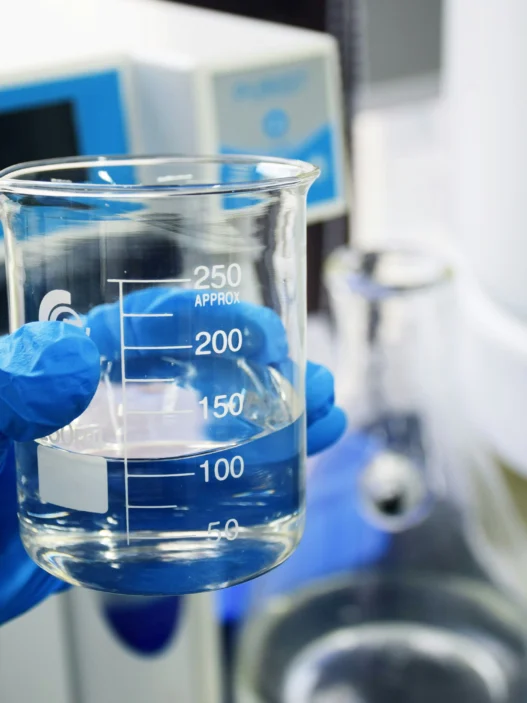Anthrone is a chemical compound often used in laboratory settings as an indicator for the presence of carbohydrates, particularly in the form of sugars. It reacts with carbohydrates to produce a blue-green color, making it a valuable tool in the analysis of food products, pharmaceuticals, and biological samples. The use of Anthrone in various industries such as food and medicine underscores its importance in everyday life, as it aids in quality control, research, and development processes.
Table of Contents:
- 💡 Commercial Applications
- ⚗️ Chemical & Physical Properties
- 🏭 Production & Procurement
- ⚠️ Safety Considerations
- 🔬 Potential Research Directions
- 🧪 Related Compounds
💡 Commercial Applications
Anthrone, a crystalline organic compound, is primarily utilized in commercial and industrial applications due to its unique properties. One of its most common uses is in the manufacturing of dyes and pigments, where it acts as a key intermediate in the production process. Additionally, anthrone is employed in the chemical industry for the synthesis of various specialty chemicals and pharmaceuticals.
In the realm of drug and medication applications, anthrone plays a significant role in the development of certain pharmaceutical products. It is utilized in some pharmaceutical formulations as a reagent for the quantification of sugars, particularly in the determination of glucose levels in blood samples. Moreover, anthrone is also used in research laboratories for the analysis of carbohydrates, making it a valuable tool in the pharmaceutical industry for quality control purposes.
Overall, anthrone’s versatility and chemical properties make it a valuable component in a wide range of commercial, industrial, and pharmaceutical applications. Its ability to interact with sugars and carbohydrates, as well as its use as an intermediate in dye production, highlight its importance in various sectors. Researchers and manufacturers alike continue to find new and innovative ways to utilize anthrone in their endeavors, further solidifying its place in the world of chemistry and industry.
⚗️ Chemical & Physical Properties
Anthone appears as a white crystalline powder with a faint odor. The powder is often used in chemical testing for the presence of carbohydrates in various substances.
The molar mass of Anthone is approximately 210.23 g/mol, while its density is around 1.18 g/cm3. In comparison to common food items, Anthrone has a higher molar mass and density than substances like sugar and salt.
Anthone has a melting point of around 155-157°C and a boiling point of approximately 390°C. These values are significantly higher than those of most common food items, such as sugar and salt, which have melting points below 200°C and boiling points below 400°C.
Anthone is minimally soluble in water and has a low viscosity. In comparison to common food items like sugar and salt, Anthrone is less soluble in water and has a lower viscosity, making it less likely to dissolve or form a thick liquid in aqueous solutions.
🏭 Production & Procurement
Anthrone is primarily produced through a chemical synthesis process involving the catalytic oxidation of anthracene. This process typically takes place in a controlled laboratory setting, where specific reagents and catalysts are utilized to transform anthracene into Anthrone. The reaction yields a white crystalline solid, which is then further purified and processed to meet industry standards.
Anthrone can be procured from chemical suppliers who specialize in providing laboratory-grade reagents and compounds. This compound is typically packaged in sealed containers or drums to ensure its purity and stability during transportation. Anthrone is commonly transported via ground shipping or air freight, following regulations for the safe handling and transport of chemical substances.
In addition to purchasing Anthrone from suppliers, researchers and industrial users may also opt to produce the compound in-house using the appropriate equipment and expertise. This allows for greater control over the quality and quantity of Anthrone needed for specific applications. Careful handling and storage of Anthrone are essential to prevent contamination and ensure its effectiveness in various chemical processes.
⚠️ Safety Considerations
Safety considerations for Anthrone primarily revolve around its potential hazards if mishandled. Anthrone is combustible and may cause irritation to the skin, eyes, and respiratory system upon contact. It is advisable to handle Anthrone with caution, wearing appropriate personal protective equipment such as gloves, goggles, and a lab coat. Additionally, due to its potential for dust formation, it is necessary to work with Anthrone in a well-ventilated area to minimize exposure to its fine particles.
Hazard statements for Anthrone include its classification as a flammable solid, a skin irritant, and an eye irritant. It is important to avoid inhalation, ingestion, and skin contact with Anthrone to prevent potential health risks. Furthermore, Anthrone may cause respiratory irritation if inhaled, so it is crucial to handle it in a controlled environment and with appropriate protective measures in place to ensure safety.
Precautionary statements for Anthrone emphasize the importance of taking necessary precautions to avoid adverse effects. These include wearing protective clothing, gloves, and eye and face protection when handling Anthrone to prevent skin and eye irritation. It is also recommended to use Anthrone in a well-ventilated area and avoid breathing in its dust. In case of accidental exposure or ingestion, seek medical attention immediately and provide relevant information about the substance to healthcare professionals for proper treatment.
🔬 Potential Research Directions
One potential research direction for Anthrone is the investigation of its utility as a chemical marker for specific types of carbohydrates in biological samples. This could involve developing new analytical methods or improving upon existing techniques for detecting and quantifying Anthrone-reactive carbohydrates in various biological matrices.
Another avenue of research could focus on exploring the potential interactions of Anthrone with other compounds in complex mixtures. By studying the selectivity and sensitivity of Anthrone towards different sugars and polysaccharides, researchers could gain valuable insights into its applicability in different fields such as food science, biochemistry, or environmental analysis.
Additionally, researchers may also explore the development of novel Anthrone derivatives with improved properties or enhanced selectivity towards specific carbohydrates. By modifying the chemical structure of Anthrone, it may be possible to create new reagents with superior performance characteristics, thus opening up new avenues for research and applications in the field of carbohydrate chemistry.
🧪 Related Compounds
One similar compound to Anthrone based upon molecular structure is anthraquinone. Anthraquinone is a polycyclic aromatic hydrocarbon with the molecular formula C14H8O2. It is structurally similar to Anthrone, having a central four-sixin ring system and oxygen atoms attached to the ring.
Another compound with a similar structure to Anthrone is 9,10-anthracenedione, also known as anthraquinone-9,10-dione. This compound is a derivative of Anthrone, possessing two carbonyl groups at the 9 and 10 positions on the anthracene ring. Its molecular formula is C14H8O2, identical to that of Anthrone.
Alizarin is another compound that shares a similar molecular structure with Anthrone. Alizarin is a dye molecule that is derived from the anthraquinone structure. It is composed of two hydroxyl groups and two carbonyl groups attached to the anthracene ring system, resembling the structural features of Anthrone. Its molecular formula is C14H8O4.





